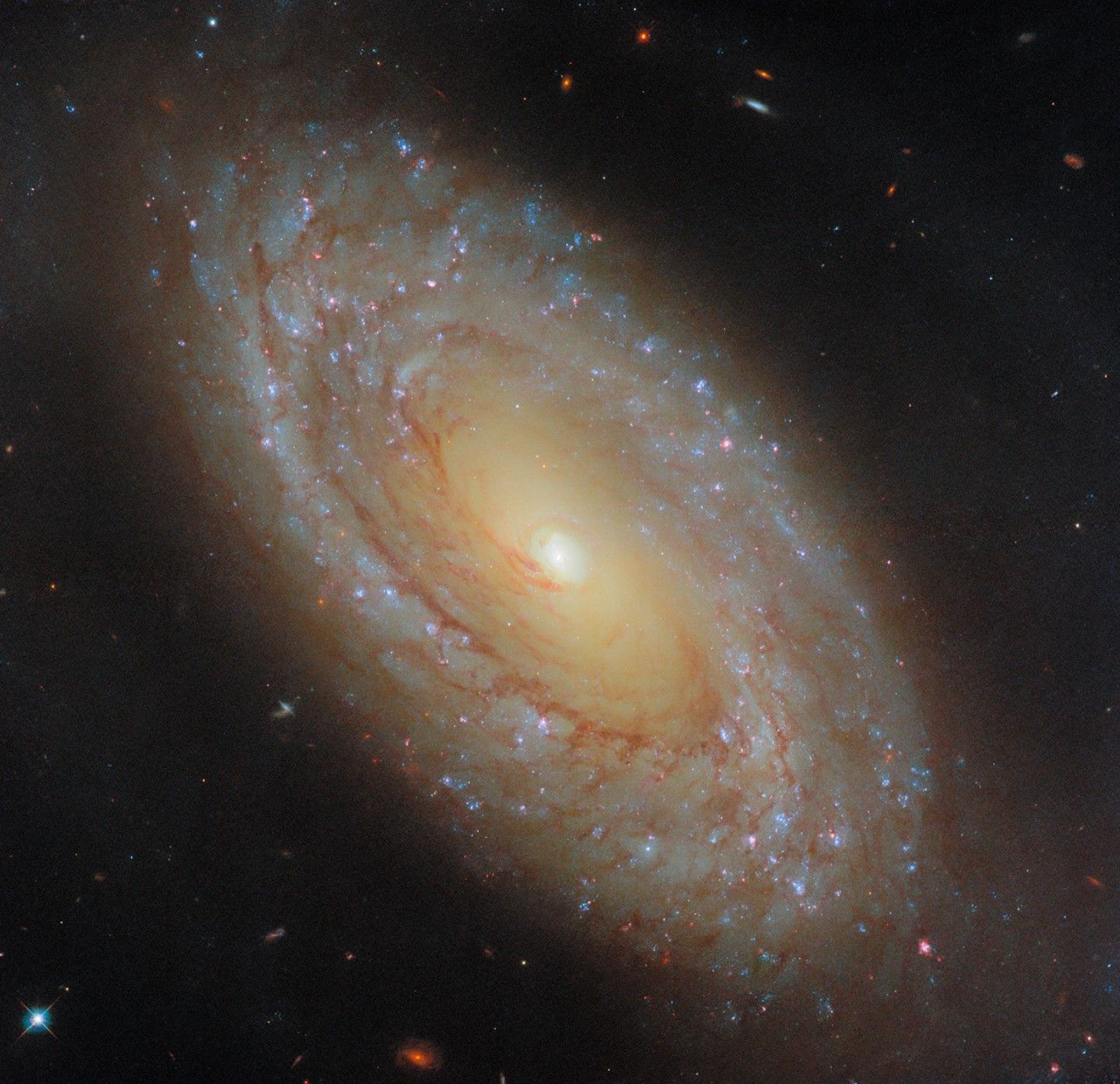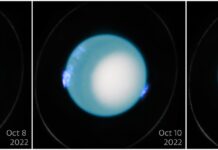The Hubble Space Telescope, a collaborative effort between NASA and the European Space Agency (ESA), has once again captured the stunning beauty of the universe, this time focusing its gaze on the spiral galaxy NGC 4941. Situated approximately 67 million light-years away from Earth in the Virgo constellation, this celestial marvel offers a unique opportunity to explore the intricacies of galactic formation and evolution.
Unveiling the Secrets of NGC 4941
NGC 4941, with its captivating spiral structure, is a relatively close neighbor in the cosmic sense. This proximity allows Hubble’s advanced instruments to reveal intricate details of its composition, including individual star clusters and the intricate clouds of gas and dust that weave through the galaxy.
The data gathered from NGC 4941 was collected as part of an observational initiative aimed at understanding the processes of star formation and the stellar feedback cycle in nearby galaxies. When stars are born, they emerge from dense, cold gas clumps. As these stars evolve, they begin to influence their environment significantly. This influence manifests as stars heat and stir the gas clouds from which they were formed. The process involves stellar winds, emitted starlight, and, in the case of massive stars, eventual explosive deaths known as supernovae. Collectively, these processes are referred to as stellar feedback, and they are crucial in determining how quickly a galaxy can give birth to new stars.
The Role of the Active Galactic Nucleus
Remarkably, the feedback in NGC 4941 is not limited to stars alone. At the very center of this galaxy lies an active galactic nucleus (AGN), which is essentially a supermassive black hole voraciously consuming gas from its surroundings. This feeding frenzy forms a superheated disk around the black hole, which emits intense radiation across various wavelengths of the electromagnetic spectrum.
Much like stars, but on a significantly larger scale, these active galactic nuclei exert substantial influence on their surroundings. They emit powerful winds, radiation, and even jets that can extend far into space. This activity not only affects star formation in the galaxy but also plays a pivotal role in shaping the overall evolutionary path of the galaxy itself.
Understanding Stellar Feedback and Galactic Evolution
The concept of stellar feedback is a fascinating one in astrophysics. Essentially, it is the way stars can impact their environment, influencing the formation of new stars and the evolution of their host galaxies. This feedback occurs through various mechanisms:
- Stellar Winds: These are streams of charged particles that are ejected from the upper atmosphere of stars. They can sweep through the surrounding gas, compressing it to form new stars or dispersing it and halting star formation.
- Radiation Pressure: Stars emit light and radiation, which can apply pressure on nearby gas clouds. This can lead to the compression of gas, spurring further star formation, or can disperse the gas, inhibiting new stars from forming.
- Supernova Explosions: When massive stars reach the end of their lifetimes, they explode as supernovae. These cataclysmic events release enormous amounts of energy, sending shock waves through the surrounding gas. This can trigger the formation of new stars or can blow away the gas, halting further star formation.
The Broader Implications for Astronomy
The study of galaxies like NGC 4941 provides astronomers with essential insights into the lifecycle of galaxies and the universe’s evolution. By observing how stars and active galactic nuclei interact with their environments, scientists can develop models to predict the behavior of galaxies over billions of years.
Moreover, understanding stellar feedback and the influence of active galactic nuclei helps astronomers comprehend the balance between star formation and the growth of supermassive black holes. This balance is crucial for understanding how galaxies evolve from young, active regions of star formation into the mature structures we observe in the universe today.
Additional Insights and Reactions
The Hubble Space Telescope remains an indispensable tool in our quest to understand the universe. Its ability to peer into the depths of space with unparalleled clarity has revolutionized our comprehension of cosmic phenomena.
The observations of NGC 4941 and similar galaxies contribute to a broader understanding of the cosmos. They help refine our models of galaxy formation and evolution, shedding light on the complex interplay between stars, black holes, and the vast structures they inhabit.
As technology continues to advance, future telescopes will build upon Hubble’s legacy, offering even deeper insights into the universe’s mysteries. The James Webb Space Telescope, set to launch soon, promises to expand our understanding even further, with its enhanced capabilities to observe the universe at infrared wavelengths.
In Conclusion
The exploration of NGC 4941 by the Hubble Space Telescope underscores the importance of ongoing astronomical research. By studying the intricate processes within galaxies, scientists continue to unravel the mysteries of the universe, enhancing our understanding of the cosmic forces that shape our world and the vast expanse beyond.
For more detailed information, you can refer to the original source at NASA’s official website: Hubble Space Telescope.
For more Information, Refer to this article.


































